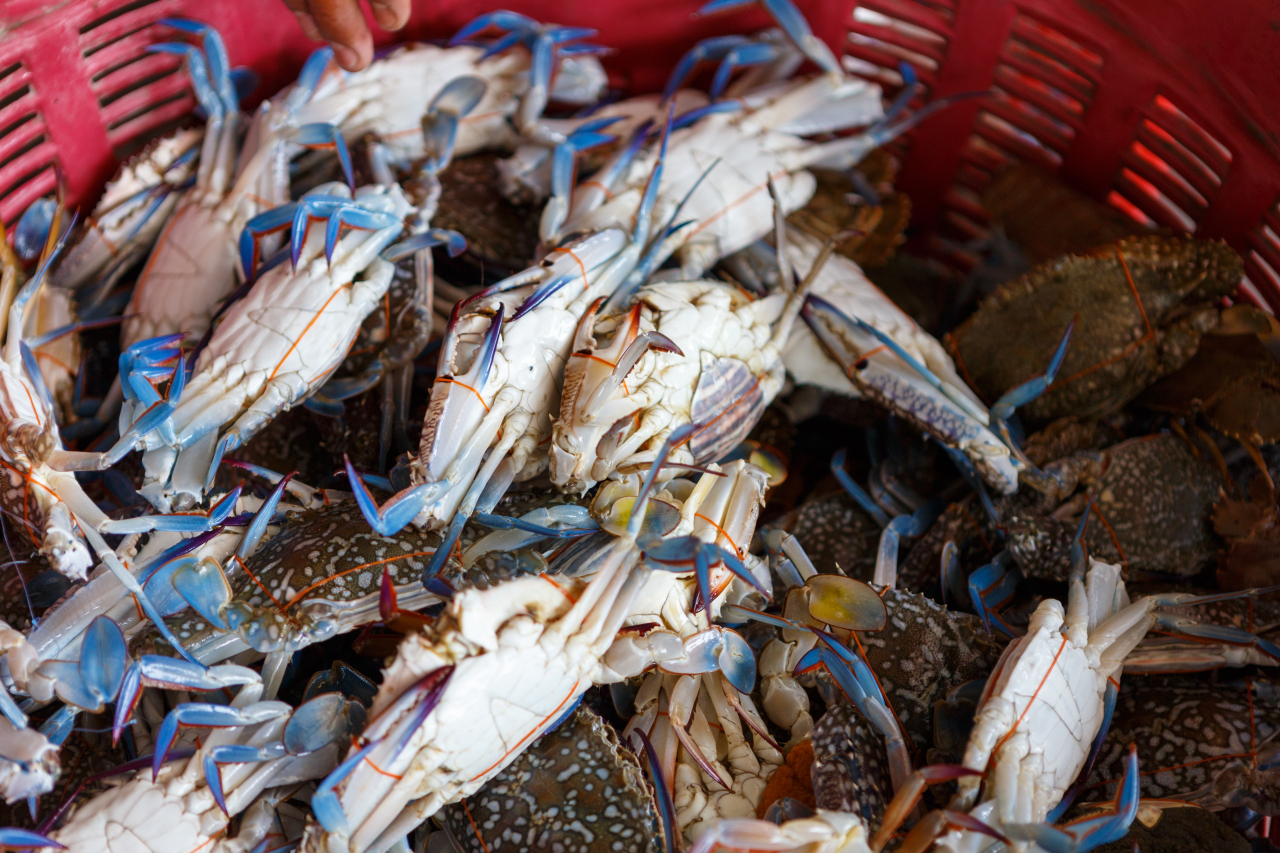 |
Callinectes sapidus, or the Atlantic blue crab (123rf) |
An Italian crustacean infestation is fanning culinary excitement in Korea, with a local seafood importer reaching out to Italy for possible imports.
Italy's northern Adriatic coast has been dealing with an invasive crab species called the Atlantic blue crab in recent years, with the species wreaking havoc on the country’s ecosystem and causing millions of dollars worth of damage.
First introduced through the bilges of foreign vessels several years ago, the Atlantic blue crab found a hospitable environment in the Mediterranean waters warmed by climate change.
The unwelcome outsider soon went on to devour 90 percent of Italy’s young clams, causing a loss of about 100 million euros (142 billion won), according to Fedagripesca-Confcooperative, an Italian fisher's association.
Italy's problem has ignited a wave of excitement in South Korea, where marinated raw crab – called gejang in Korean – is a delicacy.
Keen Korean fishmongers, sensing a culinary goldmine, promptly leaped into action. A seafood importer in Incheon surnamed Lee has already reached out to the Italian Chamber of Commerce to inquire about importing the blue crab, according to Korean news outlets.
Advanced talks are underway, and Lee expects the crabs to reach Korea within the year.
As it stands, 97 percent of imported crabs in Korea are from China, with the remaining 3 percent from Pakistan and Tunisia, according to data from the Korea Fishery Trade Association.
Although it is uncertain how much the Italian blue crabs would cost, experts speculate that the price would be similar range to the Pakistani and Tunisian crabs – about $6.50 per kilogram, potentially making it a cost-effective substitute for the premium domestic blue crabs.
The crucial question remains: Will the taste of the Italian blue crab match that of the beloved local crabs?
While nobody knows for sure, the seafood importer claimed in comments to local news outlets that the Italian blue crabs are in fact very similar to indigenous blue crabs, even more so than their Pakistani and Tunisian cousins.
There is one caveat: The harder shell of the Atlantic blue crab makes it harder to eat, as many people eat gejang with the shell on.
Despite this limitation, traders hope this Italian pest will find a fan base in Korea.







![[Today’s K-pop] Blackpink’s Jennie, Lisa invited to Coachella as solo acts](http://res.heraldm.com/phpwas/restmb_idxmake.php?idx=644&simg=/content/image/2024/11/21/20241121050099_0.jpg)